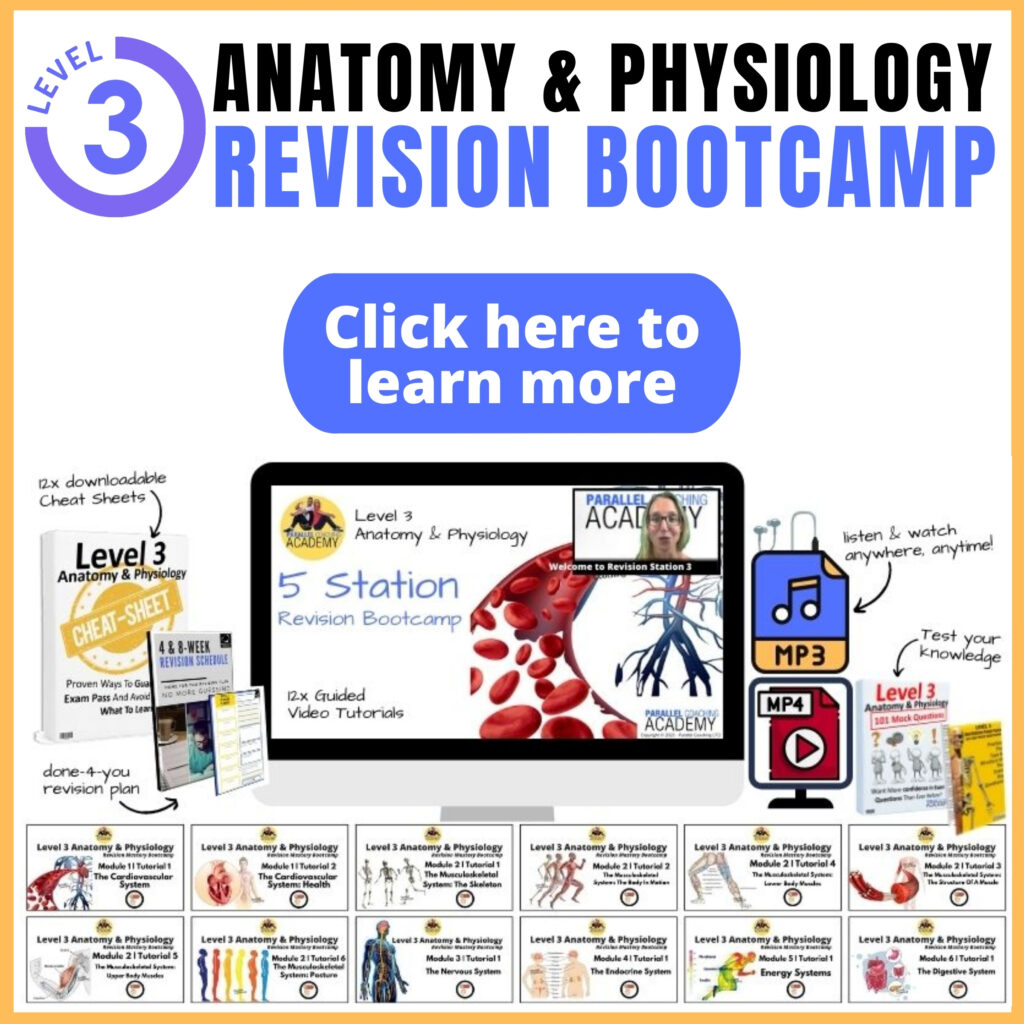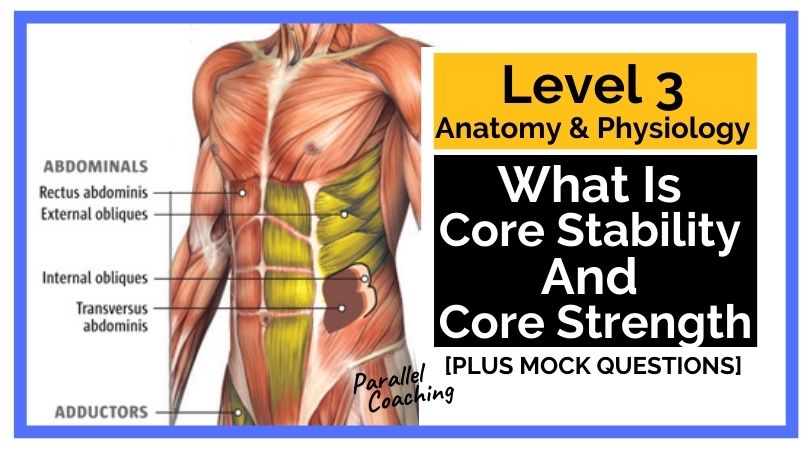In today’s video training, you’ll learn What is Core Stability and Core Strength, as well as understand key concepts of global stabiliser and local mobiliser muscles in preparation for your Level 3 Anatomy and Physiology Exam.
You’ll discover:
- What do you need to know about the core for your Level 3 anatomy and physiology exam?
- 7-minute Video Training explaining What is Core Stability and Core Strength
- The difference between global stabiliser muscles and local mobiliser muscles
- Test your knowledge with 3 Mock Questions and answers
What do you need to know about the core for your L3 anatomy exam?
The level 3 anatomy and physiology exam is divided into 8 sections, whereby Posture and Core is one of these. Therefore, you can expect approximately 3-8 questions relating to this topic for your exam
You need to know a few key concepts in preparation for your Level 2 or 3 Anatomy and Physiology Exam
- What is the inner core unit?
- The difference between core stability and core strength training
- Global stabiliser vs Local mobiliser muscles
- exercises for core stability and core strength
This is a lot of information to remember if you are trying to remember it word for word. That’s why it is important to link this information to plan for a client and feel the muscles moving.
Watch: What is Core Stability and Core Strength
The difference between global stabiliser muscles and local mobiliser muscles
Global stabiliser muscles are the focus of core stability exercises, and help hold the spine still
Local mobiliser muscles are the focus of core strength exercises and create a specific joint action.
What is Core Stability?
Core stability exercises use the global stabiliser muscles to keep the spine still while other parts of the body move. The 4 deep muscles of the inner core unit create intra-abdominal pressure to protect our spine, ligaments and intervertebral discs.
These muscles include:
- The Diaphragm
- The Pelvic Floor
- The Multifidus
- The Tranversus Abdominus (TVA)
Learn more about the Inner Core Unit HERE
Core stability exercises include those that keep the spine still, for example:
- Plank
- Quadruped Bird Dog
- Dead bug
What is Core Strength?
Core strength exercises use the local mobiliser muscles to move the spine and target specific muscle adaptation. These muscles cross a joint to create joint actions, in the same way the biceps brachii contracts to create elbow flexion.
These allow us to create movement of the spine like flexion, extension, rotation or lateral flexion. muscles include:
- Rectus abdominus
- Erector spinae
- Obliques
- Quadratus lumborum
Core strength exercises include those that move the spine, for example:
- Ab Crunch
- Bicycle kicks
- Back Raise
The difference between global stabiliser muscles and local mobiliser muscles
Global stabiliser muscles are the focus of core stability exercises, and help hold the spine still
Local mobiliser muscles are the focus of core strength exercises and create a specific joint action.
Test your knowledge with 3 Mock Questions
Look at the Core stability and core strength Anatomy and Physiology Mock questions below and jot down your answer on scrap paper or as a note in your phone.
Then scroll down to reveal the answers.
1) Which of the following is a Core Stability exercise?
A. Wood Chop
B. Dead Bug
C. Bicycle Kicks
D. Full Sit Up
2) Which of the following is NOT a muscle of the inner core unit?
A. Rectus Abdominus
B. Diaphragm
C. Pelvic Floor
D. Transversus Abdominus (TVA)
3) Which muscles create specific movement of the spine
A. Antagonists
B. Local stabiliser muscles
C. Global stabiliser muscles
D. Local Mobiliser muscles
Answers:
Q1: Answer = B
Q2: Answer = A
Q3: Answer = D
If you want more mock questions like this, then you can download more Free Mock Questions: DOWNLOAD NOW
Need More Help with your Level 3 Anatomy Revision?
For Trainee FITPROS Taking Their L3 Anatomy & Physiology Exam.
Learn, Revise & Pass Your Level 3 Anatomy & Physiology Exam In Under 10-hours
(Without Having To Spend Hours Revising Or Feeling Overwhelmed)
If you want to get your revision structured, learn everything you need to know, and feel confident on exam day, then click the link below:

Dedicated to More
Hayley “What is Core Stability and Core Strength” Bergman
Parallel Coaching
P.S. You can also find us on the following platforms:
Instagram: Follow Now
Facebook: Like Our Page
Twitter: Tweet Us
YouTube: Subscribe Here
More Core Revision Blogs: HERE

